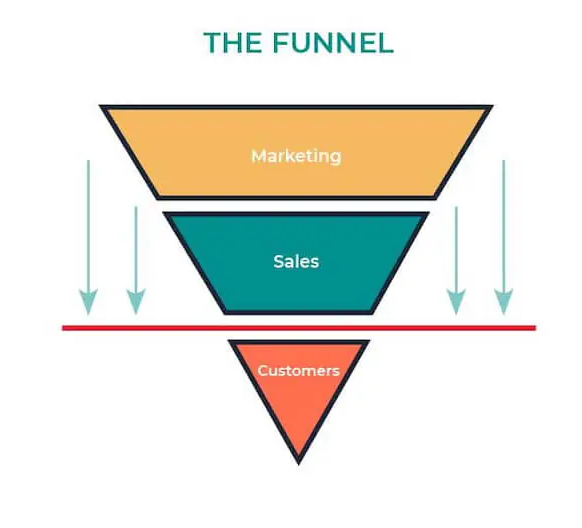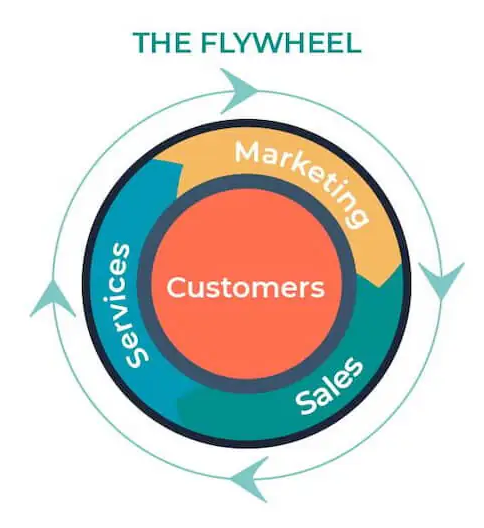"Am I playing the wrong game?"
I asked myself this question a few days ago while brainstorming and doing some business planning.
Digital product and cohort sales have been lower over the past few months. My recent cohort, while it generated more revenue than the previous cohort, had fewer students.I feel as if my products have reached fatigue.
Maybe you feel the same way about your own products.
I like to treat business like a game. And sometimes the rules of business (the game) change.
I believe the game has recently changed.
The game for the past 3 years of my career has gone a little like this:
- Get leads.
- Nurture those leads with valuable content.
- Ask for the sale.
- Get the sale.
- Repeat.
A simple game. The more leads I get, the more sales I make.
Not anymore.
A 2X increase in lead volume usually yields a ~2X increase in sales. While it's not a 1:1 correlation, it's pretty close. This nearly 1:1 correlation is why I've been so focused on growth, particularly on Instagram.
Again: The more leads I get, the more sales I make.
"How can I get as many leads as possible?" is usually the daily project.
But as I've recently learned, that's the totally wrong question to ask.
As well as I'm doing for myself right now, I'd like to think I could be doing a whole lot better. With the volume I do on Instagram, I should have more customers.
My low sales volume is not due to bad product market fit, positioning, pricing, or advertising.
It comes down to asking the wrong question.
It comes down to playing the wrong game.
And if I'm playing the wrong game, what is the right one?
The Rules Have Changed
The bar to running a business your customers rave about is in the basement. Most Creators and business owners operate with the same flawed set of rules I've followed for the past few years.
Lead volume, lead volume, lead volume.
More leads, more sales. More leads, more sales.
But what happens after the sale?
As soon as your customer hits purchase, what's the next step?
Where are you guiding them? How are you guiding them there?
How are you ensuring they're happy?
A lot of us can't answer those questions.
We get a lead, turn that lead into a customer (with a lot of work), and then pass that customer off into the abyss.
We've got their money. We reached our goal. Great!
But what about them?
For too long, we've all followed the same flawed strategy and ruleset of the game called marketing.
The flawed marketing strategy is a funnel.
**crowd boos**
What is a Funnel?
Funnels suck.
But before I dive into why funnels suck, it's worth outlining what a funnel is.
In the simplest terms, a funnel is a multi-step marketing strategy that focuses on turning strangers into leads and leads into paying customers in as few steps as possible.
You've probably heard of these little corporate phrases and lingo:
- "Are the leads hot or cold?"
- "I hate top of funnel leads!"
- "I need hot leads!"
This simply refers to which step in the funnel these leads are in. The lower the funnel, the hotter the lead. The higher the funnel, the colder the lead.
If you're lost, I get it. Here's a visual.

According to funnel logic, you increase your sales volume by generating more leads. Funnels are a volume game. The higher the lead volume, the higher the sales numbers. Simple.
This leads you to spend more money on advertising and more time on short-form content because you love seeing the number of people in your database increase.
More leads, more sales.
Typically, those leads turn into prospects through mediums like blogs, newsletters, more ads, and email marketing. You nurture these leads in the middle of the funnel.
If you're lucky, a good chunk of those leads from the top will make it to the bottom.
And the funnel, in most cases, ends with a purchase.
Which is why funnels suck.
Flywheels are Alive
I'd like to propose a new way of thinking.
The concept of ending the customer journey with a purchase is completely flawed.
Instead of a one-time pass through your marketing funnel, how cool would it be for people to cycle through your funnel multiple times? What would it mean for you to turn your existing customers into higher-paying customers and generate more business while directly promoting less?
After all, the easiest person to sell to is someone who has already paid you.
And the best source of business is referrals.
Introducing: the flywheel.

While a flywheel is sometimes broken down into the same 3-category format as a funnel, you'll notice a few different things.
- The customer is at the center of everything.
- Flywheels are cyclical instead of unidirectional.
- The sale is not the final step.
- Services lead to marketing.
In short, with a flywheel, marketing leads to more customers and sales. This isn't too different from a funnel, but now, our customers become a much bigger factor in how we promote our stuff.
Using the flywheel method, our current customers become advocates, and we benefit from the best source of business: word of mouth. Growth then becomes a much more even combination of traditional and digital advertising and word of mouth/referrals.
Let Me Clear This Up...
I don't want to convey that you don't benefit from getting word of mouth and referrals by operating in a marketing funnel strategy. You certainly do.
But a marketing funnel doesn't force you to deliver a great product. That's totally up to you.
It's a mindset shift from 'How can I do the most advertising to get the most sales possible?' to 'How can I make the best product possible to get my customers to do the marketing for me?'
As a result, with the flywheel method, you end up spending less money and time on marketing but end up making more money.
Instead of more leads, more sales, the game becomes better products, higher profits.
Notice how I say higher profits and not more sales.
When you deliver a great experience and develop a stronger relationship with your customers, you can charge more.
I experienced this with my recent cohort launch, where I signed fewer students but did nearly double the revenue from the cohort prior.
Some of those students are repeat customers.
A few other things to consider...
Why Flywheels?
You're forced to make a better product.
Because a marketing funnel's end result is a sale, everything after the funnel is up to you. You can deliver a great product—or you can't.
Your primary focus with a funnel is to generate as many leads as possible, and most of the time, that shifts your attention away from the product and towards promotion. This is great for short-term gains but terrible for long-term business strategy. Flywheels shift your focus from promotion to product, leading to a better customer experience and increased word of mouth.
You focus less time on vanity metrics.
Funnels lead you to become obsessed with likes, followers, lead volume and plays. You become so focused on generating as many leads as possible through your advertising and organic content that you sometimes forget you have a product to make better.
Customers can repeat business.
I like to think of my products as steps along a journey from Point A to Point B.
Point A is where my audience is now, and Point B is where they want to be. Step 1 in that process is usually some sort of low-cost offer, like a $29 workshop or template/automation pack. The goal is just
Now, imagine if the experience I gave that person post-purchase was completely shit? Would they come back for more? Probably not.
No matter how great your product is, if your audience doesn't know how to use it to the best of its ability or has a clearly defined path to reach their desired outcome, they probably won't become advocates of the product.
Customers become advocates after they get a great experience and reach the goal they set out to reach. You should do everything you can to focus on making their dream a reality.
Hint: most of that dream-to-reality stuff happens after they click 'buy'.
You spend less on advertising.
You spend both less time and less money when you operate in a flywheel. Your primary source of business is still, of course, leads. But with a flywheel, your volume of referrals increases because the product becomes so damn good. Say what you want about Tesla, but it's a testament to their product that they've never run a TV commercial. Imagine that? The biggest car company in the world (by market cap) doesn't spend a single penny on traditional advertising. Probably a great product, right?
The Bottom Line (No Pun Intended)
A great business knows how to deliver on the promises they set out in their marketing. You can have a great product, promote the ever-living hell out of it, and do well with sales but have really shit brand loyalty.
Focus more on making better products and less on acquiring new customers.
The irony?
Better products usually lead to new customers.
Flywheels lead to more customers (and much more cost-effective acquisition) than you can get with pumping ads and feeding the top of some shitty marketing funnel.
